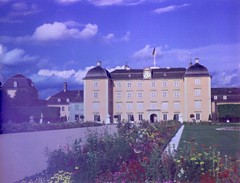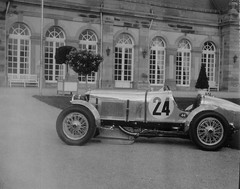Difference between revisions of "Seneca Chautauqua"
m (→"Junior" variant) |
m (→"Junior" variant) |
||
| Line 68: | Line 68: | ||
|image= http://farm4.static.flickr.com/3258/3193372717_0f1d8e3deb_n.jpg | |image= http://farm4.static.flickr.com/3258/3193372717_0f1d8e3deb_n.jpg | ||
|image_align= left | |image_align= left | ||
| − | |image_text= | + | |image_text= this one also with "Junior" shutter but better lens |
|image_by= Pete Naylor | |image_by= Pete Naylor | ||
|image_rights=with permission | |image_rights=with permission | ||
Revision as of 13:06, 11 July 2015
|
| ||||
|
|
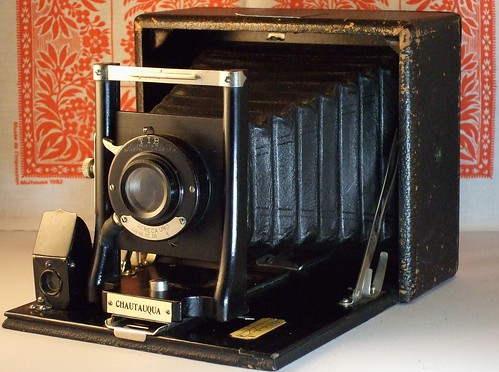
|
| common black model |
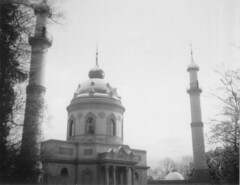
|
| imaging samples ... |
The Seneca Chautauqua is a folding bed plate camera for 4×5 inch plates. It was made in or since ca. 1905. The word Chautauqua is taken from Red Indian language. A lake, a county and a town in that county of the State of New York are named so, too. The manual cover shows a Red Indian.
The Chautauqua's characteristic specialty is the patented metal push button which is the release button for the standard carriage slide. Behind the button is an imprinting on the slide saying that this button was patented in 1904. Of course the slide carriage is movable very smoothly on its rails. On the slide's sides the wooden standard holding pillars are mounted. A piece of massive tin connects the tops of the pillars to stabilize the construction effectively. The front standard is held in slits of the pillars. In these slits the standard is movable up- and downwards. The postition can be fixed with the knurled-head screw on one of the pillars. A metal pointer on the lower end of the other pillar and an ivory plate with a feet scale (7 to 100 ft.) on the folding bed are the means of focusing (if that's not done with ground glass in the camera back). Another ivory (or ivory colored) plate on the slide's front shows the camera's type name: Chautauqua. A third one inside the camera frame bears the writing "Made by Seneca Camera Mfg. Co. Rochester, N.Y., U.S.A.".
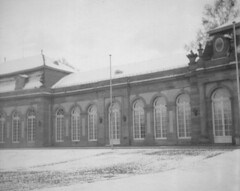
|
| ... made with Polaroid 545 4x5 film holder |
The tin box on an edge of the folding bed plate contains the reflecting type viewfinder. The finder screen is protected with a hinged cover that serves as sun blind when opened. The box itself is hinged so that it is turnable 90 degrees for previewing vertical images through the finder. The camera is equipped with a Wollensak lens in a Seneca Uno shutter with the modes time, instant and bulb which are chooseable with the pointer over the lens. The everset shutter can be released with a little lever or through the bulb connector. The aperture is selectable with the pointer below the lens, from f8 to f128 (U.S. stops) .
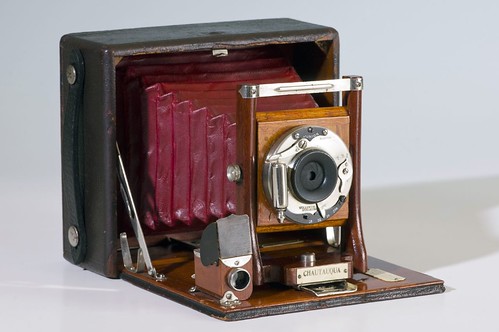
|
| variant with "Junior shutter" and simple lens image by PhotoShop Guru (Image rights) |
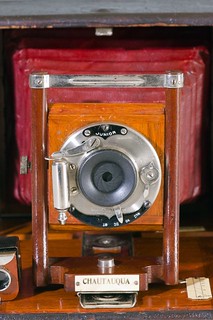
|
| image by PhotoShop Guru (Image rights) |
"Junior" variant
This variant has a Junior shutter, an older shutter type.
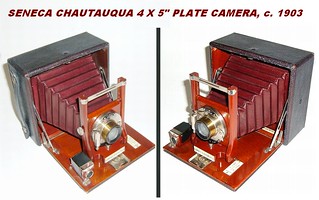
|
| this one also with "Junior" shutter but better lens image by Pete Naylor (Image rights) |
Links
- Seneca Chautauqua at Caméra de collection
- discussion about dating a Chautauqua at photo.net [1]
- Blog of Seneca Chautauqua user Robert Koopmans
